3.2.2 Safeguarding Laws and Regulations
There are international and national laws and regulations that relate to safeguarding. The aim of these laws is to protect vulnerable persons from harm by ensuring that unsuitable persons do not end up working or engaging with these at-risk of harm populations. To guide institutions in developing their internal policies and ensuring compliance with these laws and regulations, a contextual analysis of these laws is required with assistance from departmental heads e,g. legal and compliance.
At the international level, there are laws that provide for the protection and promotion of the rights of all persons such as the Universal Declaration of Human Rights, the International Covenant on Economic, Social and Cultural Rights and to specific interest groups such as:
- United Nations Convention on the Rights of the Child (UNCRC) which provides for protection of children from all forms of violence and is contextualised through the African Charter on the Rights and Welfare of the Child. Article 3 sheds light on the application of the Best Interests of the Child as a primary consideration in making determinations about their protection and welfare.
- United Nations Convention on the Rights of Persons with Disability (UNCPRD) recognizes the right of persons with disabilities to access inclusive education (Article 24), and to work in jobs that they have chosen in inclusive workplaces without any form of discrimination (Article 27)
- Convention on the Elimination of All Forms of Discrimination Against Women (CEDAW) is a rallying call for states to create a more engendered society free from gender-based violence and all forms of discrimination.
- International Labour Conventions on the prohibition of child labour, unfair labour, and employment practices, among others.
Special focus is paid to the Interagency Standing Committee Principles on Sexual Exploitation and Abuse (SEA) appreciating that sexual and gender-based violence is the most prevalent form of violence against learners in higher learning institutions, and one of the core reasons affecting effective learning in these institutions. These standards codify the minimum acceptable standards of behaviour for service providers and their staff, and they require that:
- SEA is treated as gross misconduct, with the potential for dismissal;
- Prohibits staff from paying for sex or exchanging goods or services for sex;
- Prohibits sexual activity with anyone under the age of 18, notwithstanding the age of consent in your country, or being mistaken about the age of the person is no defence;
- Strongly discourages relationships with beneficiaries and or partners as they impact on the integrity of our services.
- Obliges staff to report concerns as soon as they become aware of them, and;
- Obliges staff to create and maintain a culture which prevents sexual exploitation and abuse. Managers have a particular responsibility for holding their teams accountable for the implementation of a culture which prevents sexual exploitation and abuse.

| Previous | Next |






